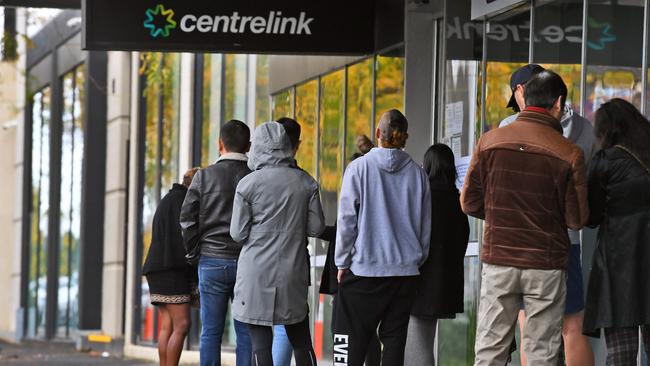Coronavirus: Revival road to a dynamic, more productive Australia

The destruction from putting our economy in suspended animation became clear on Tuesday when the Australian Bureau of Statistics reported the shedding of 780,000 jobs in the three weeks to April 4, with one in four workers in the accommodation and food services industry losing employment. The ABS payroll figures show younger people have been hit particularly hard, with almost one in 10 of those under the age of 30 losing jobs. Not surprisingly, after the enforced shutdown of non-essential businesses late last month, huge job losses occurred in arts and recreation, but also in mining, real estate and professional services. Scott Morrison has revealed how income support machinery has swung into action. Since March 16, after a boost to payments, the government has processed 517,000 JobSeeker claims. By the end of the week Centrelink will have handled as many claims for payments in six weeks as it normally would in a year.
However it is designated, the coming economic calamity is expected to be a once-in-a-century contraction, according to Reserve Bank governor Philip Lowe. In a speech on Tuesday, Dr Lowe said gross domestic product would fall by 10 per cent over the first half of this year, with the bulk of the decline in the June quarter. He warned the crisis would lead to a “staggering” 20 per cent plunge in the total hours worked by Australians in the first six months of the year, with the jobless rate reaching 10 per cent. As is his way, Dr Lowe said he was encouraged by the Prime Minister’s comments, a few hours before his own speech, that we had reached a “turning point” in the fight against COVID-19 and that the nation was on the “road to recovery”.
We often hear the political adage “never waste a crisis”; well, Australia can’t afford to botch the recovery. Before the pandemic hit, the nation was listless, meandering at sub-2 per cent GDP growth, with insipid business investment, and public spending and migration driving activity. Productivity went backwards; we were bludging, to put in bluntly, but the world was giving us a pay rise via solid export prices. Dr Lowe now sees a scenario where we could expect the economy to begin its bounce back in the September quarter, then to pick up strength: “If this is how things play out, the economy could be expected to grow very strongly next year, with GDP growth of perhaps 6-7 per cent, after a fall of around 6 per cent this year.”
Companies are now learning, painfully, how much fat they’ve built into operations. Naturally, there will be a productivity surge in the upswing, as leaner businesses get more from their capital and labour. But across the economy’s supply side we need to do much better: work smarter, be flexible and become more competitive, rather than rely on a weak dollar to do so. Dr Lowe even dusted off his policy reform playlist. These are classic tracks, but the Morrison government may finally be tapping its feet as well as listening to the hits. The RBA chief said the reform task was to make Australia a great place to invest, where businesses could expand, innovate and hire people. All the thinking had been done, he added, riffing on five reform priorities: the way we tax income, consumption and land; how we build and price infrastructure; the way we train our workforce; the regulations that promote or hinder expansion; and the flexibility and complexity of our industrial relations.
Mr Morrison acknowledges his economic brains trust has advised that to get the economy back on track “any sense of business as usual when it comes to the policy frameworks that we had prior to the election will need to be reconsidered”. If he is to build on his assured crisis stewardship and take voters on the path to higher living standards, the Prime Minister will need a revival plan that includes difficult and disruptive reforms. At the very least, we’ll need a more dynamic business sector, one that is not held back by ancient workplace rules, pointless regulation, uncompetitive tax imposts and government crowding out for capital. We will be carrying extra weight, in debt and deficits, for years. But we also have a rare chance as a nation to reinvent our world-beating engine for growth and prosperity.



This week Mervyn King, one of the world’s leading economists and governor of the Bank of England during the global financial crisis, declared that governments were “doing enormous damage” by freezing their economies through lockdowns to suppress the spread of coronavirus. “This is necessary in the short run but we need to plan an exit route sooner rather than later,” Lord King, who now sits in the House of Lords, told economics editor Adam Creighton in an interview. Using words such as recession and depression to describe the sharp downturn this year was “unhelpful”, Lord King noted, because it was a “government-mandated shutdown … it isn’t resulting from decisions by the private sector”. This was a policy-induced economic catastrophe to control COVID-19 infection rates; the longer it lasted, the more harm it would do to the mental wellbeing of those generations whose income, job security and prospects had been disrupted, he said.